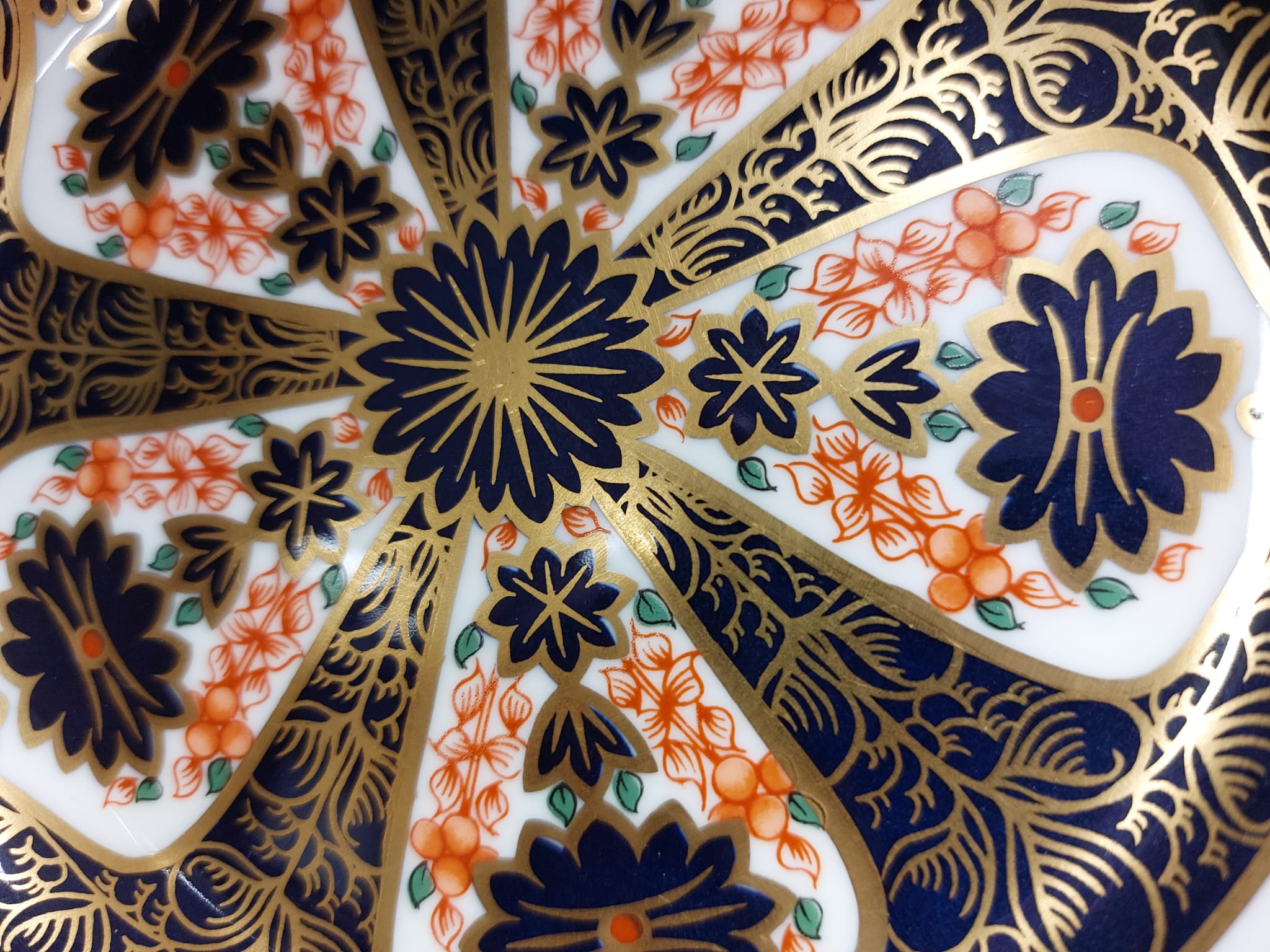Specialist Valuer for Collectable Figurines and Studies, James Middleton, guides us through ceramic paperweights from Royal Crown Derby in this latest collecting notes article.
“Through earlier tradition, paperweights had usually been produced in glass as they would be durable enough to withstand any knocks. Whilst using ceramics would’ve most likely been disregarded as too fragile, this didn’t halt the work of Royal Crown Derby through the idea and passion of Jo Ledger. This idea of a ceramic paperweight line aimed to target rich taste, explaining the incorporation of the ‘Imari’ pattern. This design had been developed from the Derby factories since the 18th Century, the use of rich colours such as blue and red on a white background alongside the gold gilding produced a show of wealth and sophistication. Ledger believed in creating something novel in character but unique to Royal Crown Derby. Animal sculptures were the perfect theme due to aligning with the history of pottery making in Derby. Keeping to this deep tradition, spanning back to approximately 1750 in Nottingham where the earliest animal studies were manufactured, the choice for the first instalment of what would become a vast collection almost paid homage to the first ceramic figures and toys that dated back to the factory in 1750.
Royal Crown Derby introduced the very first paperweights in September 1981 at Chatsworth House, comprising six birds. These are the Duck, Owl, Penguin, Rabbit, Quail and Wren. These first six paperweights provided a foundation for the huge success story of Royal Crown Derby. Between the years 1981 and 2000, statistics show 90 paperweights were introduced, averaging 5 per year in that time frame. After the introduction of the original six paperweights there was nothing planned for the following year of 1982, Jo Ledger and other management had no grand plan waiting, however he recalls being questioned in the design studio alongside his colleagues for what was next to diversify the Royal Crown Derby gift range, this conversation was prompted by the rising demand for the paperweights and their vast popularity in the market.
“Early production examples were filled with sand and fitted with the now iconic gold stoppers; however, the sand was soon abandoned due to the idea adding so much weight to the paperweights that shipping costs skyrocketed. Alternatively, this issue was briefly resolved by producing permanent plain white stoppers; however, due to customer dissatisfaction, the paperweights reverted to a gold stopper, retaining their hollow construction to reduce shipping costs and ensuring they were robust and thick enough to meet their practical purpose. Using gold-coloured stoppers aligns with the company’s ideology of quality control and using the best for their customers. The use of silver-coloured stoppers is for those of the paperweights that are more common, most likely those with various versions of the same animal.
“Years on from this first edition, Royal Crown Derby is world-renowned for its impressive and esteemed paperweights. Moving on from these original six paperweights they have gone onto create a range of miniatures to depict animals such as Dolphins, Badgers, Dogs & Cats and so on. Now over 450 unique designs have been produced alongside limited editions for worldwide retailers such as Harrods.
Still being an attractive collectable item today, Royal Crown Derby paperweights hold success at auction, reaching respectable prices across the UK. This is through both the rarity and the quality of the paperweight. As many designs have now been discontinued, they are becoming more challenging to find and purchase through auction, especially those in good condition.
“As a collectable ite,m the Royal Crown Derby Paperweight is ideal as it is priced to suit all pockets and easy to display. With auction prices starting at around £20 for the smaller common models up to four figures for the larger limited editions.”

